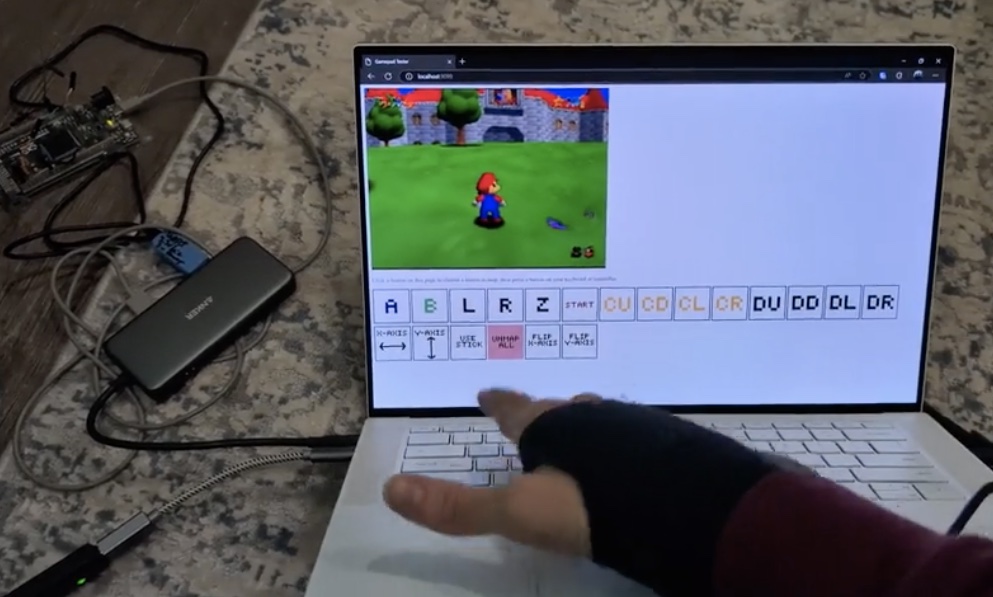Move Mario remotely with this online N64 controller system

For obvious reasons, video game console controls provide input commands directly to the console. Modern consoles may do so wirelessly, but the effect is the same: direct input. But what if you connected a “controller” to the internet? Then you could play from anywhere and that is exactly what Redditor Lovelyroyalette achieved with this Arduino Due-based N64 controller.
The N64 controller communication protocol has been well-documented for decades now and is pretty easy to replicate using an Arduino. In fact, there is even a handy library available (called N64Controller) that makes that simple to achieve. Connect a few wires and it will send commands to the N64 like they’re coming from a real controller.
Normally, people use that functionality to build their own custom N64 controllers. But Lovelyroyalette chose to do something a little different and connected the Arduino Due to their laptop, which runs a server hosting a web interface where visitors can input controller commands. Push “A” on that interface and the laptop will tell the Due to send the “A” command to the N64, causing Mario to jump.
Not only is that neat from a technical standpoint, but it has some practical uses. The most obvious is to allow remote play — including remote multiplayer sessions in Goldeneye. With a video capture card, the web interface can display the game for remote players to see. This also has interesting applications for streamers, who could, for instance, let the chat send controller commands for some added interactivity.
The post Move Mario remotely with this online N64 controller system appeared first on Arduino Blog.

